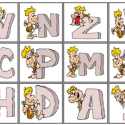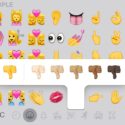A logogram is a symbol that represents a word or part of a word. Chinese is a great example of a logographic writing system. English, on the other hand, uses what’s called a phonologic writing system, in which the written symbols correspond to sounds and combine to represent strings of sounds.
Theory is one thing, and real life is another—like in so many other instances. Though there is a clear theoretical difference between logographic and phonologic writing systems, it’s safe to say that all writing systems are, to some extent, hybrids.
This begs the question: Does English have any logograms?
At first blush, the question seems silly. Of course not.
But wait, what about &. That’s a logogram. Let’s look at the other symbols we’ve got on the keyboard: @, #, $, %… they’re all logograms. We know how to pronounce them, but there are no clues as to their pronunciation in their shapes; they have to be learned. Numbers too: 4 is a single-symbol stand-in for the letters f–o–u–r.
But there may be even more. For example, I think everybody knows what lol means by now. Explicitly it’s an acronym that stands for “laughing out loud,” but it doesn’t quite mean that anymore. After all, of all the times you write “lol,” in how many were you actually laughing out loud? According to this article by Anne Curzan, “lol” is now used as an acknowledgement that a message was supposed to be funny, or even as a simple receipt. “A written version of a nod of the head and a smile,” Curzan writes. It could be argued that “lol” is no longer analyzed as an acronym. In other words, it’s become a logogram.
 Follow
Follow

